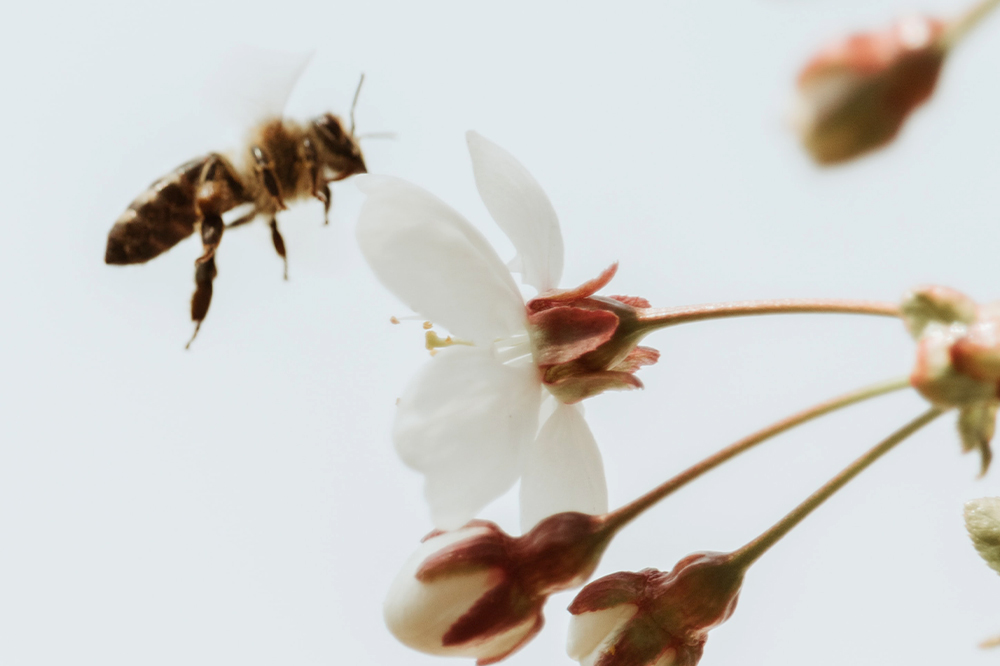It is hard to see one's self as to look backward without turning around.
Henry David Thoreau
The paradox of our digital age is information deluge and media cycles feeding to the anxiety, while also allowing a large population to work digitally without stepping out of their homes. In these times of digital overload of pandemic news, reality escapes from our grasp, truth is on a slippery slope, and lines blur between fact and fiction. In the middle of this pain and sorrow, we see the flicker of hope. The stories about heroism and voices of calmness and wisdom “this shall pass too.” People and societies are coming together in this crisis. We see every day how people with ingenuity harvesting the resources at their disposal and finding new ways of repurposing them and trying solve the issues.
Many people Using this quarantine time to learn new skills, reviving forgotten friendships and relationships, and some are forming new ones. Some taking time to self-care and rest. Zooming has become a new noun. Catching up with reading and late-night Netflixing is new norm. Financially Disadvantaged are continually thinking and worrying about bringing food to the table. Many Scared to visit a medical practitioner for a debilitating medical ailment. Some unfortunate, who lost someone are Unable to say a final goodbye to a friend or a family member. Many are unable to cheer and celebrate kids and family’s cherished moments. This pandemic also brings our collective attention to haves and have-nots. It magnifies the underlying fragility of the social fabric. When this is all done, and when we get back to our new reality, we will have a generational worth of Stories to share and imprints in our collective consciousness.
This global crisis offers an incredible opportunity to reevaluate the course of our life journey at the individual, community, national and planet levels. The setbacks and disruption to life, compel us to step out of the daily flow of life events to reevaluate life at large. Taking a Pause Time allows us to pull ourselves together and see our minds a bit more clearly and the road ahead in a different light. Life happens at the intersection of a continuous stimulus of events all around us and how we respond to them. Each response forms either wholesome or unwholesome ripples in the ocean of humanity. These ripples combine to form a tidal wave of suffering or Happiness at the individual and also at community level. The Choice is in our awareness and in our inherent capacity to respond mindfully to live a life of serenity and Joy.
It is said that troubled times are the best times to make a turnaround and put our life on the track . Turning around the base ( Asraya Paravritti in Pali ) is explained in Zen root school of Yogacara, and it is a very timely spiritual call for action in these times. Turning around could also be seen as changing the turf we stand on. This is a profound and immediate transformative change of Mind, consequently changing the way of our being and our life. Turning around (Paravritti) is stopping on our track and looking around the ground to realize what our Mind is? Is it not Confused, disillusioned, afflicted at various levels ? Let’s Turn around to start the new journey on the base (Asraya ) of Mindfulness.
TURNING AROUND IN A JOURNEY METAPHOR:
The most crucial part of any journey is to have faith that we can make this journey, and we can reach the destination. Sometimes we might not know the exact GPS coordinates. Still, we must know the general direction of the destination, whether it is north, south, west, or East to reach the destination. First and foremost, In Zen Tradition, we believe that the general direction of mindful living leads Joy and Happiness in our everyday life of Samsara . Like all long journeys, this Journey of Turning around could happen in four stages.
The first stage is settling the Mind through claiming meditation of equanimity ( Samatha ). An agitated mind can’t inquire itself to generate insight about its own nature. Calming meditation allows finding one’s own Mind by reaching it’s still point. Calming the Mind is to prepare for a reflective inquiry into our consciousness.
The second stage is Reflective Inquiry of Mind to be aware of our self-nature ( Svabhava ). Reflective Inquiry ( Prasna in pali ) into our nature. Imagine our Mind as a field, and we examine the ground we stand. When we look around, we find we have many fruit-bearing seeds ready to sprout, we also see some green shoots. We also find some deep-rooted weeds not allowing fruit bearing seeds to germinate and green shoots to thrive. The deep-rooted weeds are Delusion, hatred, anger, and the fruit-bearing seeds are compassion, Conscience, diligence. Like a good farmer who is aware of the ground to be cultivated, we need to know the difference between the weeds and fruit-bearing sprouts.
The Third stage is Turning Around by developing Knowledge (Jnana ) to cultivate Mindfulness. The Journey of Turning around needs a compass for direction and guiding stars in dark nights. The compass is Knowledge (Jhana )of the “Wheel of becoming” , and the guiding stars are “Three wisdoms” . The compass and guiding stars point us on how to cultivate wholesome thoughts and feelings and nurture them.
The fourth stage is Practicing Mindfulness. Our Mindful journey itself is our destination. Despite any obstacles, we stay on the path. We need to invoke our will energy of Strong Determination (Adittana In Pali ). To study and practice Mindfulness in all aspects of life to find joy and serenity in our life.
HOW BUDDHA FOUND MINDFULNESS TO AWAKEN:
Now we reflect on a beautiful story to inspire us. Buddha started his search to find the answers to his fundamental questions on the nature of suffering. He left his home and his family. And spent many years learning the philosophies, Ascetic practices of the time by starving himself and breaking the body to find his Mind. Wandering from place to place to find the right teacher. After six years of relentless search and Practice, Buddha is aware that he is yet to awake, with no clear answers to his questions he started with.
He is walking on the Banks of the Niranjana river, Buddha has not eaten for many days. His body is falling apart, and his Mind is not settled. At this moment, he recollected his childhood moment. His father and family and townspeople gathered in the countryside to start the harvesting season. He was seated under the apple tree in the early morning warmth of spring sun. King, his entourage and people, are celebrating the first plow, laughter, noise, and ceremonial horns blazing everywhere. In the midst of all this, he felt his Mind suddenly found calmness, his concentration was deep with awareness and a feeling of wellness spring like a fountain. This recollection of that mindful moment inspired Buddha. At that instance, he determined to access this innate quality of Mindfulness experienced in his childhood. He took little nourishment and sat down under a Bo tree with a strong determination to not to get up till he found answers to his questions. The rest of the story of his enlightenment and Awakening is known to us.
This story could be all of us. At the time of disruptions, people are more open to change, a deep crisis like this compels us to open to the possibility of changing the life course. Despite our personal dispositions and where we stand in our life, the mindful reflection allows us to redraw the Life Map… Our fundamental belief in Zen is that every person has the potential to awaken and the innate ability to take the path of mindful living. Each of us has a Budhha mind. Our Mind is Like a Mirror but obscured by the accumulation of delusional dust. Mindfulness clears the grime to reveal the shining mirror of the Buddha’s Mind. Just like mirrors that don’t hold images, we access reality without any delusions.
SETTLING THE MIND :
Calming meditation ( Samatha ) will settle our Mind on a single point of concentration. Calming the Mind from nervousness, anxiety, uncertainty, emotional turmoils. Visualize Samatha meditation with this metaphor, a large Lake of pristine water in a forest, and a herd of elephants entering the lake. They drink the water, take baths, and play with each other. When the herd left, the lake’s waters spoiled and murky. After a long enough time, the mud settles to the bottom. Clear, and still water emerges with crystalline purity.
Sit down in a posture of comfort yet bodily alert.Sit on a cushion over a thick Rug or carpet—half or Full lotus posture of Left leg on Right and Right leg on the left. Hands settled on the legs. Close your eyes and Focus Mind by narrowing down the attention gradually and allow awareness to settle on any of the following meditative objects.
- Earth as a ground that supports us
- Vastness of Ocean with undulating waves
- The fire and warmth of the gentle flame
- The cold wind blowing from high mountains
- Warm SunLight that is making everything softly glowing
- Claiming and emptiness of cloudless space
- Colors Blue, Yellow, red, White enveloping the area around you
- Or simply visualize the Elephant Metaphor as heard living the pond, the mud settling in the lake gradually and clear water of purity emerging in reflective sunlight.
When the Mind settles, the calmness sweeps your Mind and body relaxes. The breath will become shallow, signaling that you reached your still point. Stay as long as possible and return to it as frequently as possible. ( In an upcoming post I will elaborate Samata Meditation practice )
REFLECTIVE INQUIRY OF MIND :
Reflective inquiry is to perceive our current reality and generate insight into our self-nature. We examine our self-nature ( Svabhava) through a mindful reflection of questions. In Zen tradition, We recognize we are continually evolving, changing, and becoming what we are now. We know Our Mind has the potential seeds of both wholesome and unwholesome mental formations ( Feelings, thoughts ). The Reflective inquiry is to see the seeds as they are.
This inquiry is most effective when we do reflection from a third party witness mode without a judgemental attitude. We remind ourselves to Take responsibility for our actions ( Karma ). We are the sum of all Karma from the past, present. By what we think and act in the present moment forms our future Karma ( Refer :Blog post on Karma -Consequence ).
Reflective Inquiry :
Start the Reflective Inquiry to access wholesome seeds of joy, Happiness, pleasantness in Mind. These seeds are the natural gifts you have, your innate moral goodness, your creative spirit, your unique skill. After each meditative reflection, write down what comes first to your Mind. This is for you to look deeply and reflect on your own nature.
- What brings natural joy to you, the moments in your life, you feel good when this happens, Immediately after that, and long after that. The feeling of serenity, Joy, Kindness, fulfilling, goodness comes to you.
- Imagine no one in the world bothers about you, and no one ever finds your existence and your exceptional accomplishments. What is that still you do in your life, and how will you lead your life?. What is your Conscience, do you feel you have a sense of right and wrong? What are you devoted to? What considerations do you have for others?
- What is that recurring dream that keeps coming back, that leaves a pleasant feeling?
- What you try to gather around you in your life that gives joy and Happiness. Take a look around the objects you love, your best relationships, people you want to reconnect, and events you cherish. What is their common thread?
- What activities allow you real immersion and you lost sense of time, What gives you concentration, clarity of Mind, Diligence in doing
Then we shift the Reflective Inquiry to your unwholesome seeds of Irritations, Anxieties, and afflictions. The quality of meditative inquiry determines how well you can see the seeds of mental formations as they are, without a delusional Mind. In a safe environment, you can seek your trusted critic’s assessment of your unwholesome behaviors.
- What areas of your life you don’t like the way things are going ?. Whether it is Your work, relationships, Health, Financials? Nature of what you don’t like?, Observe raising of aversion, maliciousness, Envy any other negative feelings.
- What areas of life you’re trying to prove something to you and someone you care about? The feelings of Conceit, Arrogance, self-centeredness, Restlessness
- What areas of life do you feel you have no control over what you do, speak? Observe the Habit energy driven, Lust, cravings, addictions, Shamelessness, laziness, Mental fogginess, and doubt
- What you want to change in a specific area of your life, and what prevents you from making that change?
Summarize both wholesome and unwholesome behaviors and feelings in a notebook in the following order of Habits, Behavioural Tendencies, Strong Convictions, Beliefs, and character traits. Repeat the process until you are fully satisfied with the quality of your reflective inquiry.
Turning Around :
The mindful turning around needs a moral compass and guiding stars. The compass is the “Wheel of becoming.” It is a fundamental truth about human life. Buddha directly experienced this Knowledge in his Awakening and one of the first principal teachings he shared with his first disciples. Here We focus on three principle mind afflictions of Attachment, Aversion, and Ignorance. The awareness of these mental afflictions acts as a moral compass for our turning around.
The Wheel of becoming :
Our Inner sense consciousness perceives our external world through five senses of seeing, Touching, Tasting, Hearing and smelling, and mind-consciousness, which make sense out of them. In life continuum, Every external stimulation arises sensations of pleasant, unpleasant, or neutral feelings. The seeds of these feelings are stored in our consciousness. We typically tend to look forward to enjoyable moments, hence developing a propensity for Attachment or clinging to them. When Unpleasant sensations arise, we create seeds of Dislike and aversion feelings. The Neutral sensations arise and produce seeds of not knowing and ignorance. In a Life continuum, external stimuli trigger Our response from the seed store of thoughts and feelings and resulting in bodily or verbal actions on to the external world. Every action we take Simultaneously reshapes our inner seeds of consciousness. In Dogen’s words, life is what shapes us, while We shape life what it is. The cause and effect are one and the same thing and mutually evolving and becoming what we are as a person. This is Wheel of becoming at fundamental level .
The sense-making continues in our life from the moment we are born. We as a collective outcome of our cultural upbringing, relationships we had, societies we live in, our creed, and religious beliefs. Our character is a composite of our feelings or mental formations from seeds of consciousness, The Tendencies and Habit Energies formed from these mental formations. In Zen teachings, one hundred such formations are explained. We focus on Three Principal Afflictions of Mind ( Akusala Mula ) , those are Attachment, Aversion, and Ignorance and how to apply their antidotes through the Practice of Mindfulness.
- Attachment: Is the root affliction of our Mind created from our sense of “self” that is separate from others. “Attachment” manifests as a whole host of unwholesome mental formations. Attaching too much importance to ourselves leads to Conceit or excessive pride, this leads to delusional thinking and behaviors of Arrogance and inconsiderateness of others. Attachment to our possessions leads to miserliness, cluttering of life. Attachment to sensory desires leads to lust, cravings, and addictions. Attachment to activities leads to restlessness, constant distraction, boredom. Attachments to philosophies and ideas create dogmatic Mind and refuse to accept the reality This could go on and on,
- Aversion: The conditioning from unpleasant sensations leads to Dislike, turning to aversion, Jealousy, or Envy about others’ success, sometimes it turns to maliciousness actions of Bullying others, perpetuating Anger, Vengeance, and cruelty. Anger is the most destructive force of all afflictions, like a wildfire that destroys self and also everything that touches.
- Ignorance: Not knowing, lack of awareness leads to laziness, forgetfulness, doubt, and lack of self-confidence, lack of faith. And the sense of not knowing what is right or wrong.
All three mental afflictions, either independently or together, form the basis of creating our visceral sensory responses to the external world. A combination of Attachment and Ignorance leads to pretension and Dishonesty. A Combination of Attachment and ignorance leads to carelessness and Distraction Mind. Now we have a compass of “Wheel of Becoming “
THREE GUIDING STARS OF WISDOM:
We are also Guided by three shining Stars in our journey. These guiding stars are the wisdom of knowing and seeing the reality of our existence by Three forms. The first one is being aware of images created by our delusional Mind and stories it weaves in response to sensory stimuli around everything. Second, as the world of all things of interdependent nature with no independent substance for themselves and the Third is the world of the ultimate reality of the “Suchness” of everything.
The simple and powerful analogy shared by wise teacher Buddha brings this to life. Imagine you are going for a walk on a twilight evening in a secluded area. Suddenly you see a snake on the path, immediately triggering fear and panic and standing frozen on your track; after a minute, you realize the snake is not moving. On careful examination, you know it is Hemp rope, not a snake. You laugh about your fear, and on your way back, you reflect on the whole incident. Thinking who left that rope on the path, who made it, and what material, The Rope is made of weaving the threads of Hemp fibers, hemp might be cultivated in a city far from where you live. If you look more deeply, you realize hemp fibers are nothing but a heap of organic chemical molecules. Those molecules are also the expression of fundamental level atoms and subatomic particles. They are also common expressions of energy in hemp, yourself, and the person who placed the rope on the track. The three pearls of Wisdom of Awareness are, the first wisdom realizes that a snake is an image, story created by Mind out of Hemp rope. The second wisdom is the rope is nothing but a heap of interdependent worlds. The hemp as an organic material, the farmer who cultivated it, the rope maker who weaved it, who left it on the path and finally yourself walking on that path at that time. The third underlying phenomenon is expression of energy in different forms , the reality of the “suchness” of everything . The expression of reality is not revealed through the world of forms or languages or the Mind of knowing this wisdom only emerges through direct experience of meditation.
ANTIDOTE TO AFFLICTIONS :
The single universal Antidote of all afflictions is meditative awareness. There are many different forms of meditative practices, consider each one as a skillful means to reach the same objective of mindful awareness. Mindful awareness in plain English is “when a thought arises, being aware of thought has arisen. When a feeling is formed, being aware of feeling has formed, and the nature of that. When perception is created, being aware that perception has been created”. The awareness opens the Choice of shaping our response. The Compass of “Wheel of becoming” and guiding stars of” three pearls of Wisdom” allows us to take a turn around and start the journey towards mindful living.
STARTING THE JOURNEY OF MINDFUL LIVING :
We are never going to be totally comfortable starting something new. Stop watching for perfect timing. A thousand-mile journey begins with a single step, now we take our first step, we don’t hesitate, we don’t self-doubt. In our modern world, meditative practices are being objectified. Selling a cushion to software to guide meditation, music, or incense to invoke a pleasant feeling in our senses. Consider them as skillful means ( Kusala Upaya) and don’t attach too much with them as we know every Attachment leads to nothing but a delusional mind.
I recommend starting your mindful journey from the wellness access points of your Mind ( refer to the first section on Reflective inquiry). The conscious act of what you love to do, If you are a gardener, you start your mindful practice with gardening if you are a mason you start from bricklaying. In your gardening, bring awareness to every act of planting, pruning, mending. Awareness of thought, feeling, and perception, as you keep awareness at the forefront of consciousness. You realize thoughts subside like a waves setting in a lake and your act of gardening, and you become one. No separateness exists. Once you appreciate this, start a 15min’s sitting meditation of breath awareness ( Anpanasati, Zazen ) or Loving Kindness Meditation ( Metta ). Vast trove of mindfulness literature available on the Web for reference, find a wise teacher. ( In future this web site offers guidance on meditative practices). Mindful living does not start or end with 15 minutes sitting meditation. We can expand Mindfulness into everything we do in our everyday life. Your mindful practices continue to evolve and develop. Eventually, it will bring clarity of Mind from the cloudiness of all past conditioning and the suffering it creates.
We know this is a long and arduous journey, but be confident about every step you take accumulates to add up the miles. When in a dilemma, or when you lose your way, remember the compass of becoming and guiding stars of three pearls of wisdom to bring you back to a mindful road. The road itself is a destination. Imagine an Eighty-year-old Budhha, not the god, but an old and frail human being walking over the dusty plains of India with his utter determination to awaken one and all people. After his enlightenment in his late thirties till his passing off ( Pari Nirvana ) in his eighties, he continued to practice Mindfulness in every moment.
SUGGESTIONS TO STRENGTHEN YOUR MEDITATIVE PRACTICE:
- Taking a strong vow for Committing time and focus on meditating.
- Finding a like-minded group of friends, family, or like-minded community (sangha in Pali ) to share and learn.
- Diligence, patience, and effort are best friends to mature the Practice, Don’t attach too much to outcomes of meditation. When time ripens, meditative awareness arrive by themselves.
- Remind yourself that life is a mystery and live spontaneously, you don’t know what awaits in every bend in our journey. Only you know every wholesome action ( Karma ) leads to a beneficial outcome.
- A lot of Dharma talks and meditative practices are available on the internet, but remind yourself you have innate Knowledge to start something small within you.
- Reading the prescription is not taking medicine, Knowledge is essential, and it could also become a hindrance. The practice is what leads to your inner wisdom and freedom from suffering.
Looking forward to hearing from you on our mindful journey.




